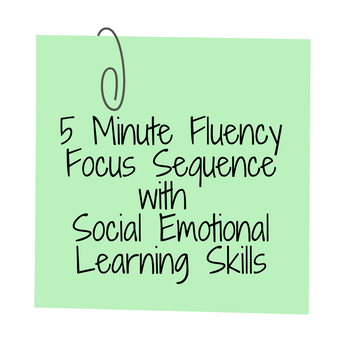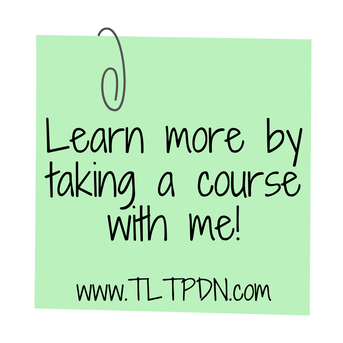Teaching Fluency to Students with Dyslexia:
Strategies and Considerations
How to Teach Reading Fluency to Students with Dyslexia
Teaching reading fluency to students with dyslexia comes with unique challenges. While rapid automatized naming (RAN) is a strong predictor of fluency and reading ability, directly addressing RAN scores through instruction may not yield desired results. However, teachers can employ effective strategies to improve fluency and integrate reading skills to support students with dyslexia. In this blog, we will delve into practical approaches and considerations for teaching fluency to students with dyslexia.
Fluency, the ability to read effortlessly with accuracy, speed, and expression, is a critical component of reading proficiency. In many classrooms, teachers incorporate fluency instruction at the Tier One level, aiming to develop students' reading fluency through various strategies and activities. This targeted 5 minute fluency practice for teaching fluency meets the needs of our Tier One learners.
Fluency, the ability to read effortlessly with accuracy, speed, and expression, is a critical component of reading proficiency. In many classrooms, teachers incorporate fluency instruction at the Tier One level, aiming to develop students' reading fluency through various strategies and activities. This targeted 5 minute fluency practice for teaching fluency meets the needs of our Tier One learners.
However, when it comes to students with dyslexia, a specialized approach is necessary due to their specific challenges with rapid automatized naming (RAN) and phonological awareness.
Exploring RAN and Reading Difficulties:
Understanding the impact of RAN on reading development is crucial. Students with poor RAN scores often struggle with word-level reading, affecting phonological/phonemic skills, phonic development, sight word acquisition, and overall fluency. However, research reveals that solely training RAN does not improve reading skills. Instead, we need to focus on enhancing fluency instruction and employing strategies that build students' sight vocabulary.
Re-Defining Fluency for Students with Dyslexia:
For students with impaired RAN who have been diagnosed with dyslexia, teachers should define fluency differently. This is because impaired RAN is closely related to word-reading speed, than to word-reading accuracy. For these students, the goal of fluency should be a moderate rate and expression when reading. For students with dyslexia, fluency cannot focus on the timed aspect of the skill.
Ask - What do I want contextual reading to look like for this student?
Don’t ask - How fast can this student read a text? Instead, set realistic goals and provide direct instruction to meet the student’s lagging fluency skills.
So to improve students’...
-contextual reading,
-expression while reading, and
-rate of reading to a moderate rate.
The Role of Sight Vocabulary in Fluency:
Building a strong vocabulary is a key factor in developing fluency. Therefore, fluency instruction should prioritize building a sight vocabulary. Fluency instruction should emphasize instant word recognition, regardless of whether words are phonetically regular or irregular.
Addressing Fluency Challenges in Students with Dyslexia:
When students with dyslexia show little improvement in fluency, it is essential to investigate the underlying reasons. Impaired RAN is often linked to word-reading speed rather than accuracy in these students. Defining fluency goals differently for students with dyslexia becomes crucial, focusing on moderate rate and expression rather than timed aspects. Instruction should be tailored to address their specific fluency needs.
The Importance of Phonological Awareness:
While training RAN does not directly enhance reading skills, research demonstrates that phonological awareness training can improve reading outcomes. For students with dyslexia, who may have deficits in both RAN and phonological awareness, addressing sub-skills of language becomes vital. Phonological awareness training can partially address RAN difficulties, contributing to improved reading abilities.
Exploring RAN and Reading Difficulties:
Understanding the impact of RAN on reading development is crucial. Students with poor RAN scores often struggle with word-level reading, affecting phonological/phonemic skills, phonic development, sight word acquisition, and overall fluency. However, research reveals that solely training RAN does not improve reading skills. Instead, we need to focus on enhancing fluency instruction and employing strategies that build students' sight vocabulary.
Re-Defining Fluency for Students with Dyslexia:
For students with impaired RAN who have been diagnosed with dyslexia, teachers should define fluency differently. This is because impaired RAN is closely related to word-reading speed, than to word-reading accuracy. For these students, the goal of fluency should be a moderate rate and expression when reading. For students with dyslexia, fluency cannot focus on the timed aspect of the skill.
Ask - What do I want contextual reading to look like for this student?
Don’t ask - How fast can this student read a text? Instead, set realistic goals and provide direct instruction to meet the student’s lagging fluency skills.
So to improve students’...
-contextual reading,
-expression while reading, and
-rate of reading to a moderate rate.
The Role of Sight Vocabulary in Fluency:
Building a strong vocabulary is a key factor in developing fluency. Therefore, fluency instruction should prioritize building a sight vocabulary. Fluency instruction should emphasize instant word recognition, regardless of whether words are phonetically regular or irregular.
Addressing Fluency Challenges in Students with Dyslexia:
When students with dyslexia show little improvement in fluency, it is essential to investigate the underlying reasons. Impaired RAN is often linked to word-reading speed rather than accuracy in these students. Defining fluency goals differently for students with dyslexia becomes crucial, focusing on moderate rate and expression rather than timed aspects. Instruction should be tailored to address their specific fluency needs.
The Importance of Phonological Awareness:
While training RAN does not directly enhance reading skills, research demonstrates that phonological awareness training can improve reading outcomes. For students with dyslexia, who may have deficits in both RAN and phonological awareness, addressing sub-skills of language becomes vital. Phonological awareness training can partially address RAN difficulties, contributing to improved reading abilities.
 6 Minute Fluency Sequence for Students with Dyslexia l Miss Rae's Room Special Education Teaching Blog
6 Minute Fluency Sequence for Students with Dyslexia l Miss Rae's Room Special Education Teaching Blog
Implementing the 6-Minute Fluency Sequence:
To enhance contextual reading, expression, and reading rate at a moderate pace, teachers can utilize a 6-minute fluency sequence designed specifically for students with dyslexia who have impaired RAN. This sequence provides targeted instruction to address their fluency challenges effectively. Access a free resource of this instructional sequence to support your teaching endeavors HERE!
Teaching reading fluency to students with dyslexia requires thoughtful strategies and considerations.
By understanding the impact of RAN, the significance of vocabulary, and the relationship between RAN and phonological awareness, educators can optimize instruction to improve fluency skills. Implementing a tailored fluency sequence for students with dyslexia who have impaired RAN can foster contextual reading, expression, and a moderate reading rate. Empower your students with dyslexia through effective fluency instruction and help them thrive in their reading journeys.
Happy and healthy teaching!
By Miss Rae
To enhance contextual reading, expression, and reading rate at a moderate pace, teachers can utilize a 6-minute fluency sequence designed specifically for students with dyslexia who have impaired RAN. This sequence provides targeted instruction to address their fluency challenges effectively. Access a free resource of this instructional sequence to support your teaching endeavors HERE!
Teaching reading fluency to students with dyslexia requires thoughtful strategies and considerations.
By understanding the impact of RAN, the significance of vocabulary, and the relationship between RAN and phonological awareness, educators can optimize instruction to improve fluency skills. Implementing a tailored fluency sequence for students with dyslexia who have impaired RAN can foster contextual reading, expression, and a moderate reading rate. Empower your students with dyslexia through effective fluency instruction and help them thrive in their reading journeys.
Happy and healthy teaching!
By Miss Rae




